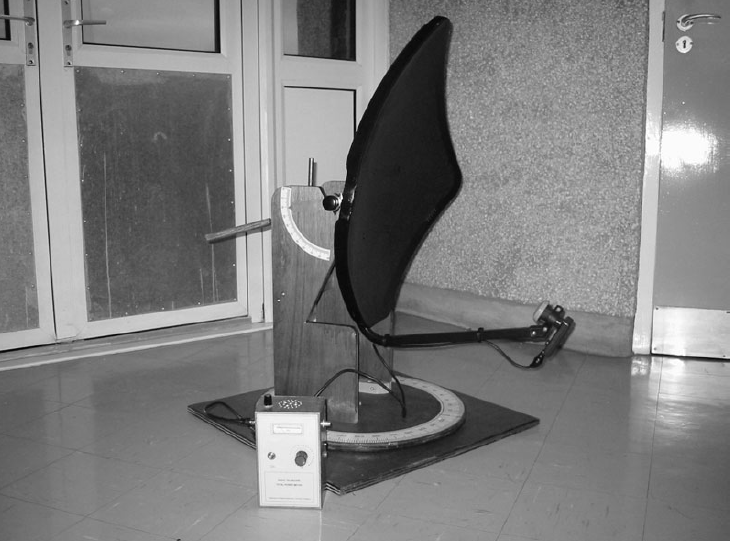
Observational radio astronomy
 المؤلف:
A. Roy, D. Clarke
المؤلف:
A. Roy, D. Clarke
 المصدر:
Astronomy - Principles and Practice 4th ed
المصدر:
Astronomy - Principles and Practice 4th ed
 الجزء والصفحة:
p 424
الجزء والصفحة:
p 424
 5-9-2020
5-9-2020
 1719
1719
Observational radio astronomy
Although most radio celestial objects require sophisticated instrumentation for their detection, it is possible to undertake a couple of simple exercises with a satellite dish and a power meter. The detector system is the kind used by professional satellite dish installers for orienting the collector to the best direction in the sky. The equipment is also capable of detecting the solar output at 10 GHz.
The receiving dish should be set in a cradle in the form of an alt-azimuth mount with scales marked in degrees. The supports can be made of wood with a large horizontal base carrying the azimuth scale marked out in degrees. The size of the circular scale should be sufficient to allow the azimuth setting to be read to an accuracy ∼1/2◦. The scale should be fixed with N = 0◦, E = 90◦, S = 180◦ and W = 270◦. When setting out the equipment, the N direction may be established using a compass, making allowance for the local magnetic deviation. Control of the altitude setting can be arranged by

Figure 1. A simple satellite receiver dish mounted on an alt-azimuth frame with the output displayed on a power meter.
fitting a metal bar to the rear of the dish and by providing two uprights attached to the horizontal plate with notches in their tops in which the rod is seated. A segment of a large circular scale needs to be attached to the rod axis so that the altitude of the pointing of the dish can be read after fixing its position with an adjustable stop. A photograph of a working arrangement is shown in figure 1.
The telescope consists of a 55 cm dish that reflects the radio signals into a horn at its focus. The horn is connected to a ‘low noise block’ (LNB) which shifts the signals to lower frequency (∼1 GHz) before sending them down a cable to a signal detector. In the power meter box, the signal is amplified again and then rectified with a diode to give a voltage dependent on the strength of the received radiation. The output voltage is displayed on a dial and the sensitivity of the equipment can be adjusted by a control knob.
Note that the dish is offset in that it points in the direction of the arm supporting the horn rather than the direction perpendicular to the wire mesh. (Allowance needs to be made for this in setting the ‘zero’ angle on the altitude scale.) Point the dish to the sky. After switching on the power meter, adjust the sensitivity knob until the meter reads mid-scale. A check can be made to see if the system is working by placing a hand over the cap protecting the horn. The system should give a deflection as your hand is much warmer than the sky. At 10 GHz, an empty patch of sky has an effective temperature of about 10 K, this being made up of about 7 K from the water vapour in the atmosphere and 3 K from the Big Bang cosmic background radiation—in comparison your hand should have a temperature slightly above 300 K.
 الاكثر قراءة في مواضيع عامة في علم الفلك
الاكثر قراءة في مواضيع عامة في علم الفلك
 اخر الاخبار
اخر الاخبار
اخبار العتبة العباسية المقدسة


